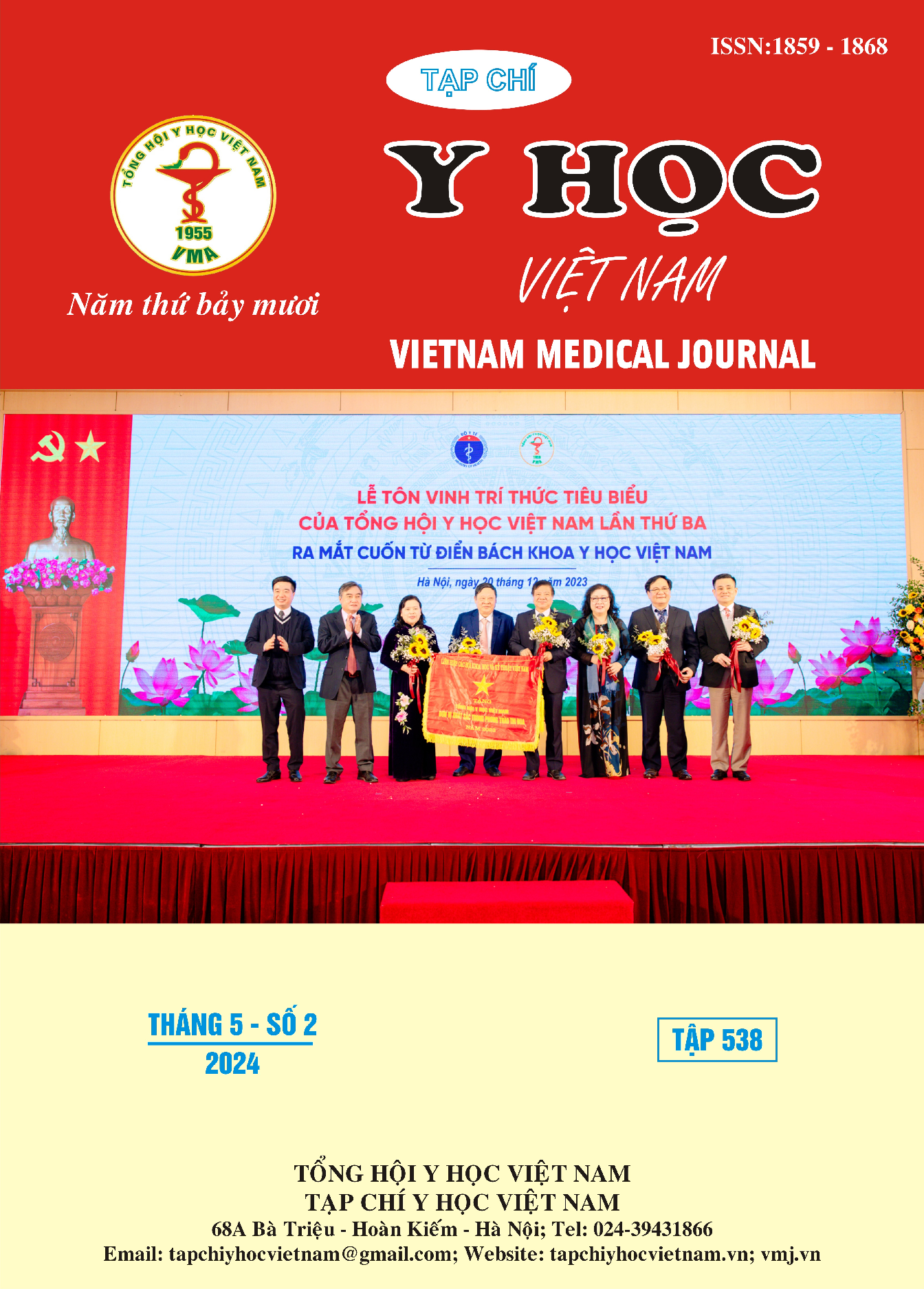GÁNH NẶNG CHĂM SÓC NGƯỜI BỆNH ĐỘNG KINH CỦA NGƯỜI CHĂM SÓC CHÍNH TẠI BỆNH VIỆN TÂM THẦN TỈNH NAM ĐỊNH
Nội dung chính của bài viết
Tóm tắt
Mục tiêu: Mô tả thực trạng gánh nặng chăm sóc người bệnh động kinh của người chăm sóc chính và xác định một số yếu tố liên quan đến gánh nặng chăm sóc người bệnh động kinh tại Bệnh viện Tâm thần tỉnh Nam Định. Đối tượng và phương pháp nghiên cứu: Đối tượng nghiên cứu là người bệnh động kinh và người chăm sóc chính. Thời gian nghiên cứu: Từ tháng 3/2023 đến hết tháng 06/2023. Nghiên cứu mô tả cắt ngang. Kết quả: Người bệnh động kinh thuộc nhóm tuổi 18-40 chiếm tỷ lệ cao nhất. Người chăm sóc chính thuộc nhóm tuổi >60 tuổi chiếm tỷ lệ cao nhất. Tỷ lệ chất lượng cuộc sống của người bệnh động kinh ở mức cao là 12,5%; mức thấp là 39,1%. Tỷ lệ gánh nặng chăm sóc người bệnh động kinh mức nghiệm trọng là 58,3%. Nhóm tuổi của người bệnh và người chăm sóc chính có liên quan đến gánh nặng chăm sóc với p<0,05. Mối liên quan nghịch giữa gánh nặng chăm sóc và chất lượng cuộc sống của người bệnh (r=-0,478; p<0,001). Tình trạng stress, trầm cảm, lo âu của người chăm sóc chính có mối liên quan thuận đến gánh nặng chăm sóc: Stress ( r= 0,81; p<0,001), lo âu (r= 0,70; p<0,001), trầm cảm (r= 0,92; p<0,001). Có mối liên quan thuận giữa gánh nặng chăm sóc với sự hỗ trợ xã hội (r= - 0,59; p<0,001). Kết luận: Gánh nặng chăm sóc người bệnh động kinh từ mức trung bình trở lên chiếm tỷ lệ rất cao. Có mối liên quan giữa gánh nặng chăm sóc với chất lượng cuộc sống, mức độ hỗ trợ xã hội, mức độ stress, lo âu, trầm cảm.
Chi tiết bài viết
Từ khóa
Gánh nặng chăm sóc người bệnh động kinh, Chăm sóc người bệnh động kinh, Động kinh, Người chăm sóc chính.
Tài liệu tham khảo
2. Nguyễn Thị Thái Hòa (2018). Mối quan hệ giữa gánh nặng gia đình và chất lượng cuộc sống ở những người chăm sóc bệnh nhân động kinh tại quận Thủ Đức. Tạp chí Y học Việt Nam, tập 471, tháng 10, tr 51-56.
3. Hội Thần kinh học Việt Nam (2022). Hội nghị khoa học toàn quốc năm 2022, , xem ngày 1/1/2023.
4. Mai Nhật Quang và Lê Văn Tuấn. (2021). Nghiên cứu một số đặc điểm lâm sàng động kinh tại tỉnh An Giang. Tạp chí y học Việt Nam, 509(1), 323-400.
5. Vũ Thị Quý, Trương Tuấn Anh, Nguyễn Thị Lý và cộng sự. (2021). Thực trạng gánh nặng chăm sóc của người chăm sóc chính người bệnh tâm thần phân liệt tại bệnh viện tâm thần kinh Hưng Yên năm 2020. Tạp chí Khoa học Điều dưỡng, Tập 3 số 2, 20-25.
6. Nguyễn Đắc Quyết, Lê Quang Cường. (2022). Gánh nặng chăm sóc người mắc bệnh thần kinh ngoại vi do đái tháo đường Type 2. Tạp chí y học Việt Nam, 520(2), 148-152.
7. Tổ chức Y tế thế giới WHO (2022). Bệnh động kinh, , xem ngày 1/1/2023.
8. Gratão, A. C. M., Brigola, A. G., Ottaviani, A. C., et al. (2019). Brief version of Zarit Burden Interview (ZBI) for burden assessment in older caregivers. Dementia & neuropsychologia, 13, 122-129...
9. Lai, ST, Tan, WY, Wo, et al. (2019). Burden of caregivers of adults with epilepsy in Asian families. Epilepsy , 71 , 132-139
10. Pokharel, R., Poudel, P., Lama, S., et al. (2020). Burden and its predictors among caregivers of patient with epilepsy. Journal of Epilepsy Research, 10(1), 24.


